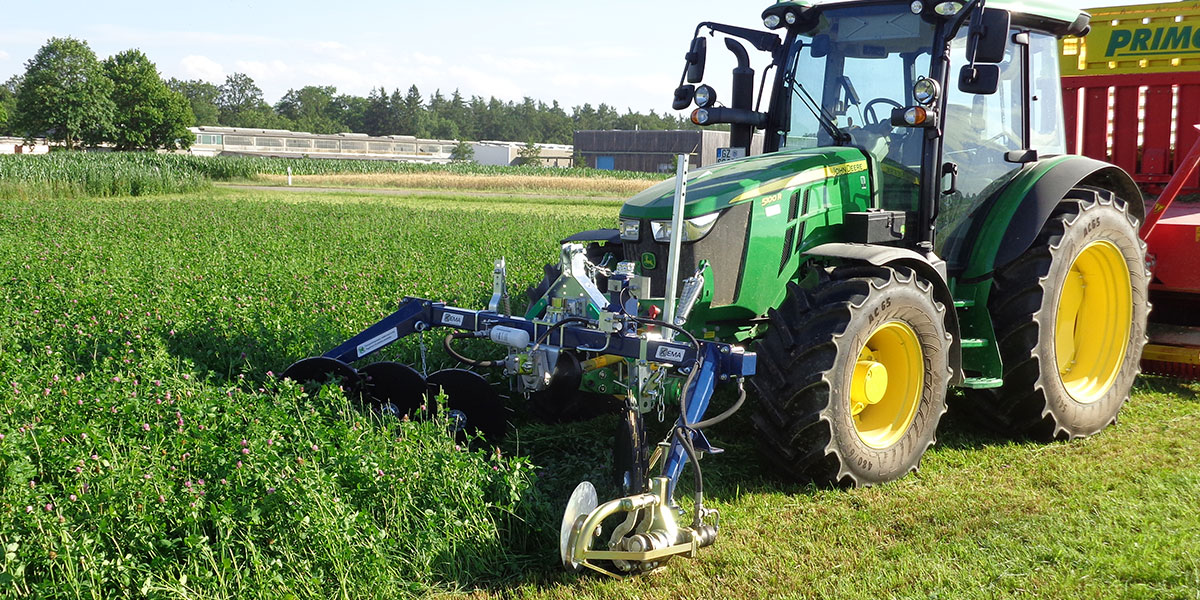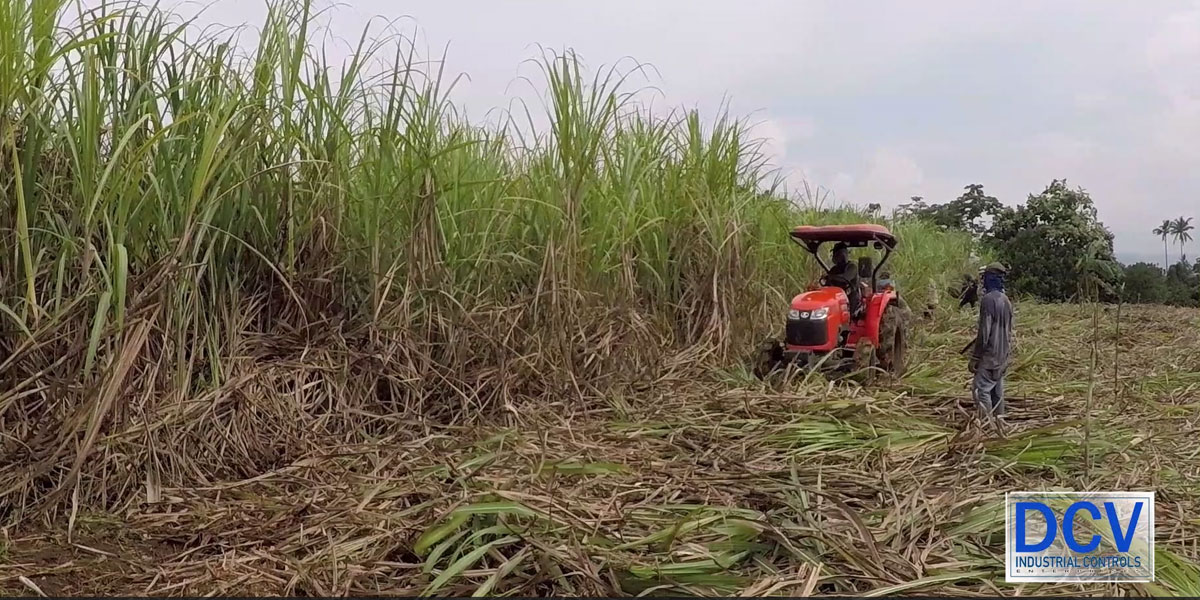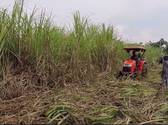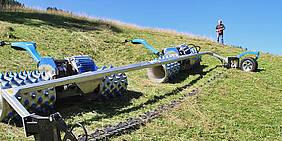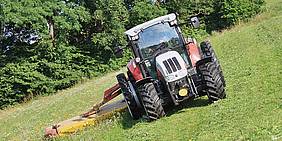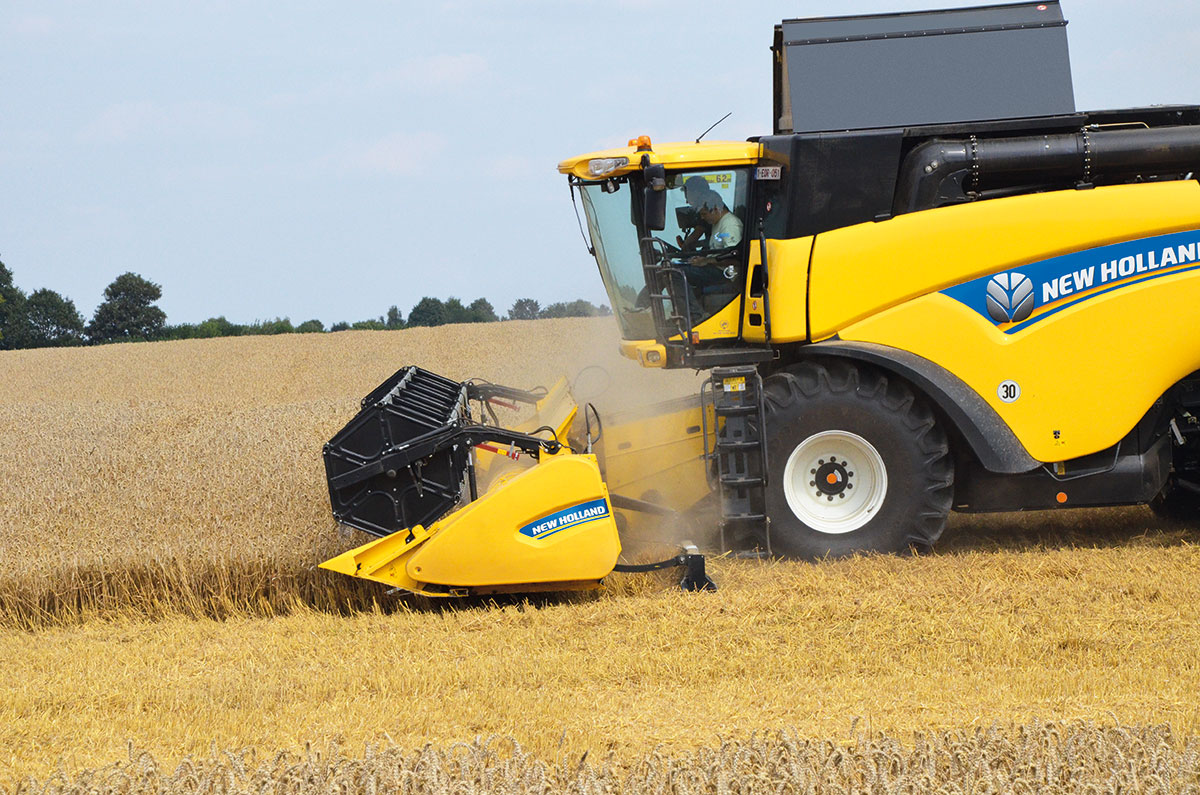Admittedly, it’s an unusual comparison: tractor against motorised mower!? No matter who we discussed this with beforehand, practically everyone was sceptical and asked a lot of questions: How can I adapt a six metre wide beam to the ground? How will I get into the field with it? Who sharpens the blades? What does this mega-mower cost? With our practical comparison we don’t just want to answer questions and highlight the pros and cons of this new technology, we primarily wanted to stimulate thought around the subject. The Brielmaier Duo 6 sets new standards with regard to energy efficiency, impact, safety on slopes, soil protection and feed quality.
The unequal test candidates
In order to judge area performance and fuel consumption, we mowed an area of around 2 hectares in our test site near Mautern in Styria twice: The first cut was with a tractor, and the second cut with the motorised mower. Up to 50% of the test area is steep and just about navigable with a tractor with dual wheels. The tractor pairing of the Steyr 4105 Multi and the Pöttinger Novacat 265 H is the usual mowing technology used by the company. “With a rear mower, I have greater agility when mowing tips than with a front mower, and the weight is close to the large rear wheels. That‘s a major advantage on slopes. A front / rear combination would be too heavy and take up too much power. The side-thrust on the slope would also lead to a large overcut. So the area performance would barely increase“. That’s how the farmer justifies his choice of technology. The Brielmaier Duo 6 drives on seven rows of sprocket wheels with rubber studs. The motorised mower was steered by the boss Martin Brielmaier himself, as he has the most practical experience with it. Just like the farmer with his tractor, Brielmaier first had to mow the entire area.
How the Duo 6 works
The mower beam is driven by the 29 horsepower base machine. The second carrier vehicle acts a stabiliser for the mowing beam and so can have a less powerful motor. The driver only operates one machine. The second unit is co-driven automatically. The machine started first has priority, and is the lead machine. This also applies when operating using a radio remote controller.
Brielmaier transported the test machine using a car trailer with a turntable drawbar. Four ramps were folded down for loading and unloading. This meant the two mowers did not have to be separated from the beam.
Another key issue alongside transport is: who will sharpen these wide cutters? There is a practical solution to this now too. A new automatic sharpener from BBS in Vorarlberg, which can sharpen all double and standard cutter beams (see video here).
Adaptation to the ground
The test are in Mautern does not pose any major challenges in terms of adaptation to the ground. In order to give ourselves an idea of this challenge, we moved the Brielmaier Duo 6 to our test site in Saalbach. There we mowed a ski slope with every possible difficulty: Different inclines up to 100%, closely joined humps and depressions, collection shafts for the snow machines, wet patches etc. – a real challenge for ground adaptation and soil protection!
None of us could imagine how well a 6 m wide mowing beam could adapt to the ground in question. It has to be seen to be believed! Our tip: Have a look at the video of the test! You’ll be amazed!
Investment costs v. savings
You will have to spend over 60,000 Euro including VAT on the mega-mower. This major investment cost must be offset against the possible savings in a single-operation evaluation. The question is: how can a new concept like this be integrated into the business: What technology is there already, and what can be replaced. An existing Brielmaier mower could be expanded, e.g. with
the 6 metre beam to become a Duo system. If there is a second mower in the neighbourhood, a joint purchase of the 6 metre beam could reduce the cost burden. If use of a twin axle equipment carrier can be avoided using this new concept, then the potential financial savings could be huge. Both mowers can also be used solo with narrower beams and many other attachments.
As well as these factors, the high impact power, reduced fuel consumption, soil protection, high feed quality, fast re-growth and the high level of safety on slopes are also worth mentioning.
Brielmaier Duo 6 motorised mower beats tractor with disc mower
The mower beam is driven by the 29 horsepower base unit. The second carrier vehicle only acts to stabilise the mowing beam.


